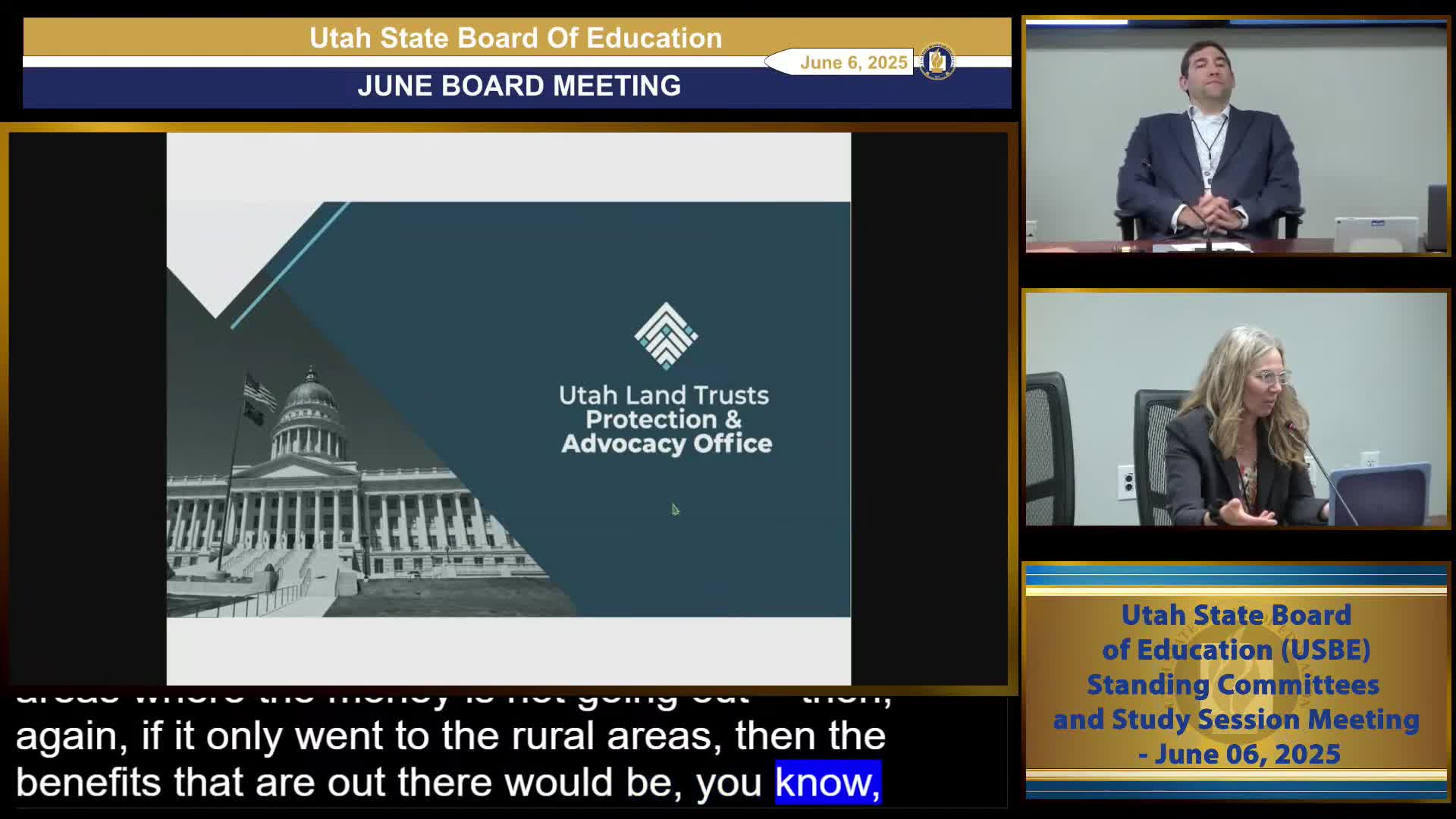Utah's Trust Lands Office champions educational funding and legislative advocacy
June 07, 2025 | Financial Operations , Utah Board of Education, Offices, Departments, and Divisions, Organizations, Utah Executive Branch, Utah
This article was created by AI summarizing key points discussed. AI makes mistakes, so for full details and context, please refer to the video of the full meeting. Please report any errors so we can fix them. Report an error »

The June 6, 2025, meeting of the Utah State Development Board (USDB) focused on the ongoing management and impact of trust lands and financial operations related to public education. The session began with acknowledgments of the board's efforts in balancing various interests, particularly in light of increasing scrutiny during the current legislative session.
Board member Earl expressed gratitude for the hard work of the financial operations team, emphasizing the importance of effective decision-making for the benefit of Utah's children. This sentiment set the tone for discussions on the growing significance of permanent funds and their influence on economic growth across the state.
Liz, representing the advocacy office, highlighted the role of her team in ensuring that the interests of beneficiaries, particularly public education, are well-represented. She explained that their office acts similarly to a guardian ad litem, providing independent representation for those who may lack the capacity to advocate for themselves. This includes attending meetings related to finances and land management to safeguard the rights of beneficiaries.
The meeting also addressed the distribution of funds among various educational entities, noting that public schools received approximately $112 million in the current year. Liz pointed out the unique funding structures for schools for the deaf and blind, which differ based on historical land allocations.
Further discussions included the office's communication efforts and advocacy work with newly elected legislators to help them understand their roles as trustees of the trust system. A significant highlight was the successful advocacy for Amendment B, which passed and will increase future distributions to 5% for all beneficiaries.
The meeting concluded with a commitment to enhance engagement with State School Board members and ongoing collaboration with the advisory committee. Overall, the session underscored the board's dedication to managing trust lands effectively and ensuring that public education continues to benefit from these resources.
Board member Earl expressed gratitude for the hard work of the financial operations team, emphasizing the importance of effective decision-making for the benefit of Utah's children. This sentiment set the tone for discussions on the growing significance of permanent funds and their influence on economic growth across the state.
Liz, representing the advocacy office, highlighted the role of her team in ensuring that the interests of beneficiaries, particularly public education, are well-represented. She explained that their office acts similarly to a guardian ad litem, providing independent representation for those who may lack the capacity to advocate for themselves. This includes attending meetings related to finances and land management to safeguard the rights of beneficiaries.
The meeting also addressed the distribution of funds among various educational entities, noting that public schools received approximately $112 million in the current year. Liz pointed out the unique funding structures for schools for the deaf and blind, which differ based on historical land allocations.
Further discussions included the office's communication efforts and advocacy work with newly elected legislators to help them understand their roles as trustees of the trust system. A significant highlight was the successful advocacy for Amendment B, which passed and will increase future distributions to 5% for all beneficiaries.
The meeting concluded with a commitment to enhance engagement with State School Board members and ongoing collaboration with the advisory committee. Overall, the session underscored the board's dedication to managing trust lands effectively and ensuring that public education continues to benefit from these resources.
View full meeting
This article is based on a recent meeting—watch the full video and explore the complete transcript for deeper insights into the discussion.
View full meeting

